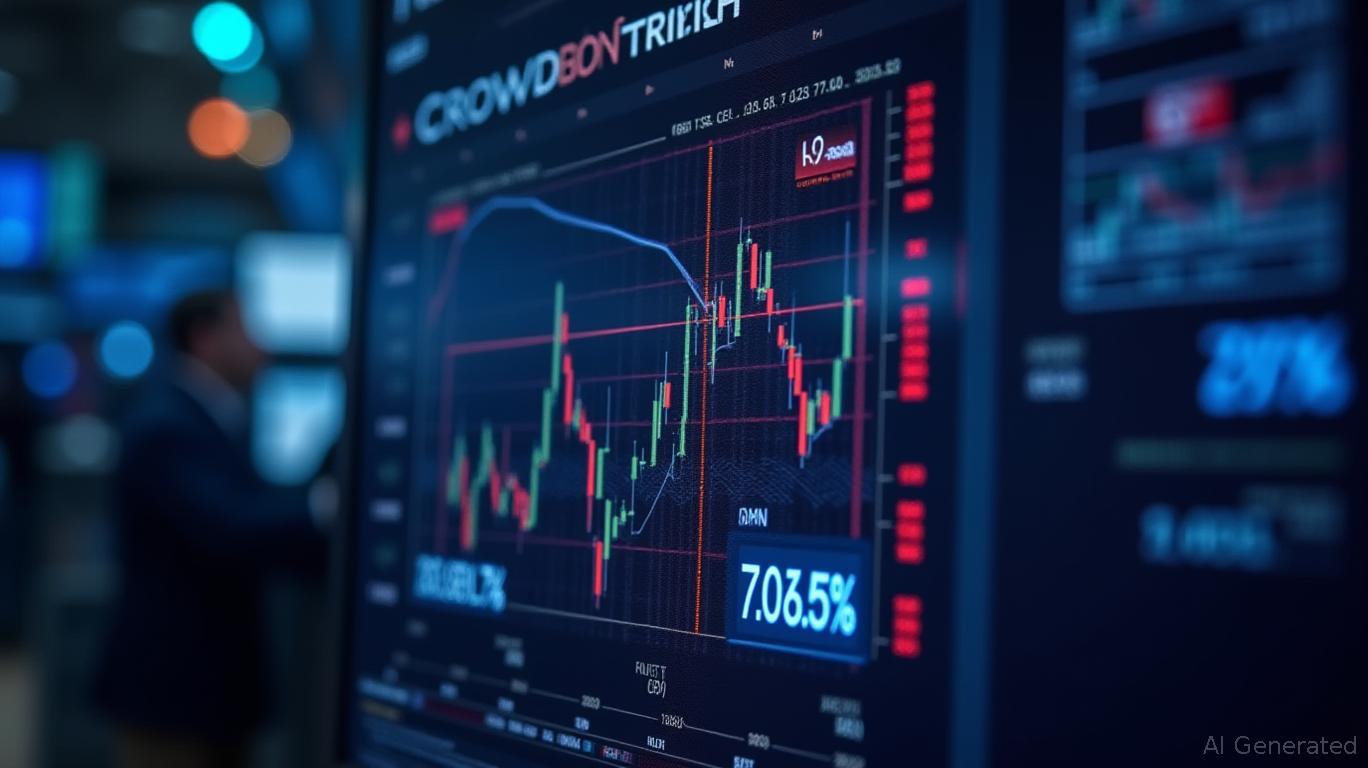Exploring the Role of Technical Indicators in Identifying Market Trends
Tuesday, May 6, 2025 9:55 pm ET
Introduction
In the ever-evolving world of stock market investing, understanding market trends is crucial for making informed decisions. One of the tools investors frequently use to identify these trends is technical indicators. This article explores the concept of technical indicators, how they influence stock market movements, and offers actionable insights for investors.
Core Concept Explanation
Technical indicators are mathematical calculations based on the price, volume, or open interest of a security or contract. They are used by traders and investors to predict future price movements and to identify market trends. These indicators are plotted as charts and are used to analyze historical data, helping investors to forecast potential future movements.
There are various types of technical indicators, including trend indicators, momentum indicators, volatility indicators, and volume indicators. Trend indicators, such as moving averages, help identify the direction of the market. Momentum indicators, like the Relative Strength Index (RSI), measure the speed and change of price movements. Volatility indicators, such as Bollinger Bands, assess the rate of price fluctuations, while volume indicators analyze the strength of a price trend based on trading volume.
Application and Strategies
Investors apply technical indicators to develop strategies that guide their trading decisions. For instance, a trader might use moving averages to determine buy and sell signals. When the short-term moving average crosses above the long-term moving average, it may signal a buying opportunity, and vice versa.
Another strategy involves using the RSI to identify overbought or oversold conditions. An RSI value above 70 might suggest that a stock is overbought and due for a price correction, while a value below 30 could indicate an oversold condition and a potential buying opportunity.
Case Study Analysis
A notable example of technical indicators impacting stock market decisions is the January 2021 gamestop saga. Traders on various platforms noticed an unusual pattern using volume indicators. The stock's volume suddenly surged, indicating a strong buying interest. Many investors who were tracking these indicators jumped in, leading to a massive price rally. This case highlights how technical indicators can signal significant market movements, though it also underscores the importance of considering broader market conditions and sentiments.
Risks and Considerations
While technical indicators are valuable tools, they are not foolproof. One of the risks is relying solely on these indicators without considering other factors like economic conditions, company fundamentals, or geopolitical events. Technical indicators are based on historical data, which may not always predict future movements accurately.
Investors should use technical indicators as part of a comprehensive strategy that includes fundamental analysis and risk management. Diversifying investments and setting stop-loss orders can help mitigate risks. It's also crucial to continuously educate oneself and stay updated with market trends and new indicators.
Conclusion
Technical indicators play a significant role in identifying market trends, providing investors with valuable insights for making informed decisions. While they offer substantial benefits in forecasting market movements, it's essential to use them as part of a broader investment strategy. By understanding the strengths and limitations of technical indicators, investors can enhance their trading strategies and improve their chances of success in the stock market.
In the ever-evolving world of stock market investing, understanding market trends is crucial for making informed decisions. One of the tools investors frequently use to identify these trends is technical indicators. This article explores the concept of technical indicators, how they influence stock market movements, and offers actionable insights for investors.
Core Concept Explanation
Technical indicators are mathematical calculations based on the price, volume, or open interest of a security or contract. They are used by traders and investors to predict future price movements and to identify market trends. These indicators are plotted as charts and are used to analyze historical data, helping investors to forecast potential future movements.
There are various types of technical indicators, including trend indicators, momentum indicators, volatility indicators, and volume indicators. Trend indicators, such as moving averages, help identify the direction of the market. Momentum indicators, like the Relative Strength Index (RSI), measure the speed and change of price movements. Volatility indicators, such as Bollinger Bands, assess the rate of price fluctuations, while volume indicators analyze the strength of a price trend based on trading volume.
Application and Strategies
Investors apply technical indicators to develop strategies that guide their trading decisions. For instance, a trader might use moving averages to determine buy and sell signals. When the short-term moving average crosses above the long-term moving average, it may signal a buying opportunity, and vice versa.
Another strategy involves using the RSI to identify overbought or oversold conditions. An RSI value above 70 might suggest that a stock is overbought and due for a price correction, while a value below 30 could indicate an oversold condition and a potential buying opportunity.
Case Study Analysis
A notable example of technical indicators impacting stock market decisions is the January 2021 gamestop saga. Traders on various platforms noticed an unusual pattern using volume indicators. The stock's volume suddenly surged, indicating a strong buying interest. Many investors who were tracking these indicators jumped in, leading to a massive price rally. This case highlights how technical indicators can signal significant market movements, though it also underscores the importance of considering broader market conditions and sentiments.
Risks and Considerations
While technical indicators are valuable tools, they are not foolproof. One of the risks is relying solely on these indicators without considering other factors like economic conditions, company fundamentals, or geopolitical events. Technical indicators are based on historical data, which may not always predict future movements accurately.
Investors should use technical indicators as part of a comprehensive strategy that includes fundamental analysis and risk management. Diversifying investments and setting stop-loss orders can help mitigate risks. It's also crucial to continuously educate oneself and stay updated with market trends and new indicators.
Conclusion
Technical indicators play a significant role in identifying market trends, providing investors with valuable insights for making informed decisions. While they offer substantial benefits in forecasting market movements, it's essential to use them as part of a broader investment strategy. By understanding the strengths and limitations of technical indicators, investors can enhance their trading strategies and improve their chances of success in the stock market.

Ask Aime: How to invest in the stock market?









